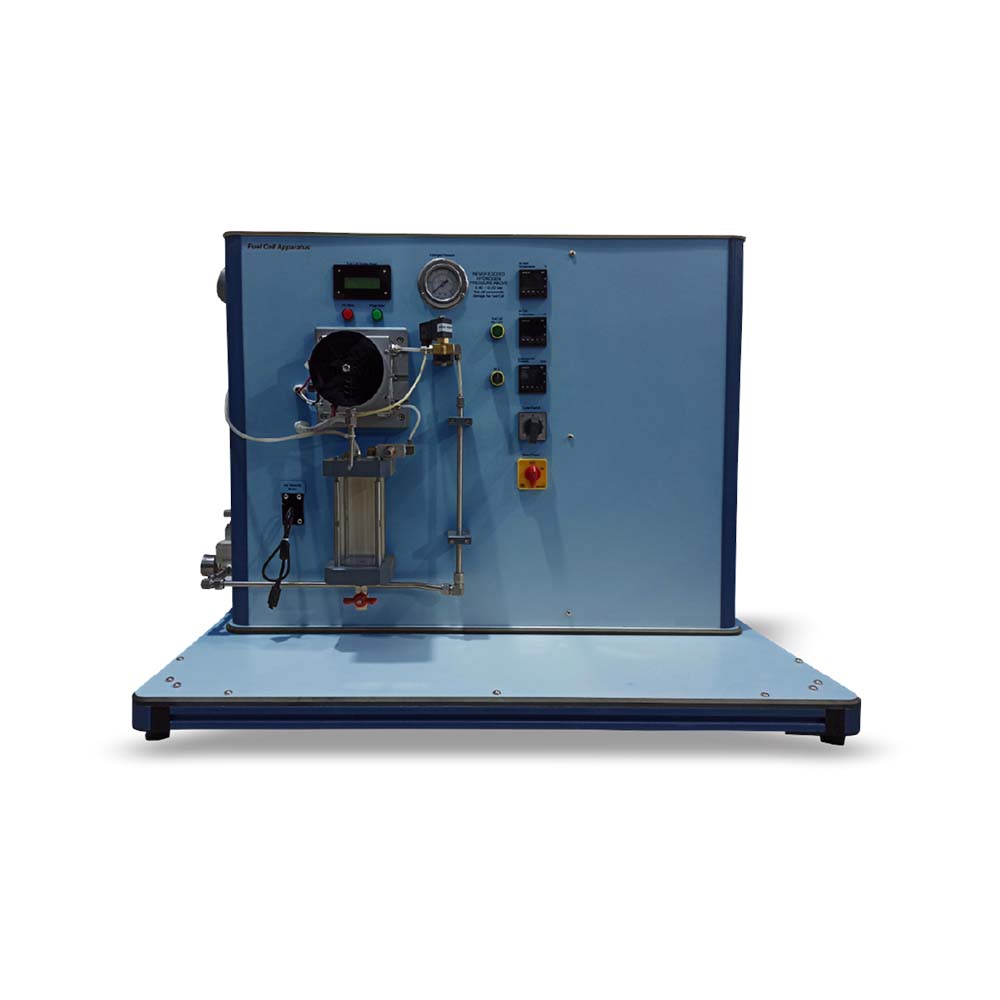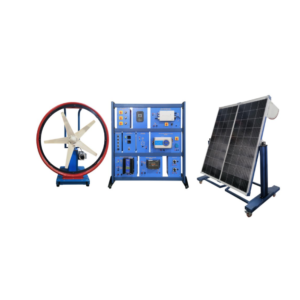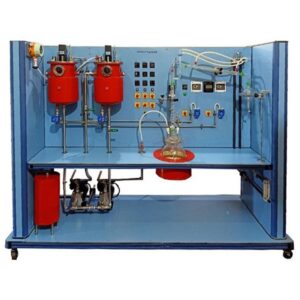Fuel cells are energy converters that, unlike heat engines, convert chemical energy directly into electrical energy. Heat is generated as a by-product during this process. The main component of this trainer is a polymer membrane fuel cell which is operated in combined heat and power generation. The system is supplied with high-purity hydrogen from a pressure vessel on the anode side and with oxygen from the ambient air on the cathode side. The fuel cell is operated either current-regulated, voltage regulated, or power-regulated via an integrated electronic load. The set point of the electronic load allows a precise adjustment of all operating points and a very accurate recording of characteristics. Auxiliary energy for the fan and control required for operation is provided from the mains. The moisture in the stack can be regulated via the operating temperatures and the supplied airflow so that no external humidification is required. All relevant measuring values are recorded to work out the fuel cell’s energy balance. The measured values are transmitted directly to a PC via DAQ System & software (optional).
Experiments
- Conversion of chemical energy into electrical and thermal energy.
- Function and design of a fuel cell system.
- Relationships of fuel cell operating parameters.
- Effects on the electrical performance of fuel cells.
- Recording and visualization of all relevant voltage/current characteristics.
- Calculation of relevant variables.
Specifications
- Investigation of a polymer-membrane fuel cell.
- Air-cooled system in combined heat and power.
- The hydrogen is supplied via a standard pressure vessel.
- High-pressure reducing valve for hydrogen pressure vessel supplied.
- Oxygen supplies directly from the ambient air
- Precise adjustment of all operating points via electronic load.
- Regulation of moisture without external humidification.
- Sensors for flow rate, pressure, temperature, voltage, and current strength.




